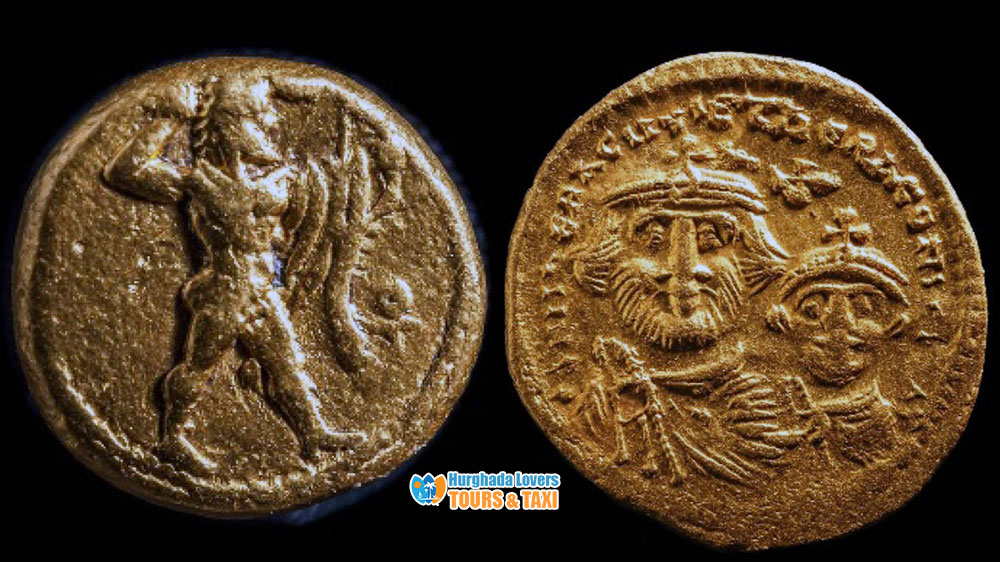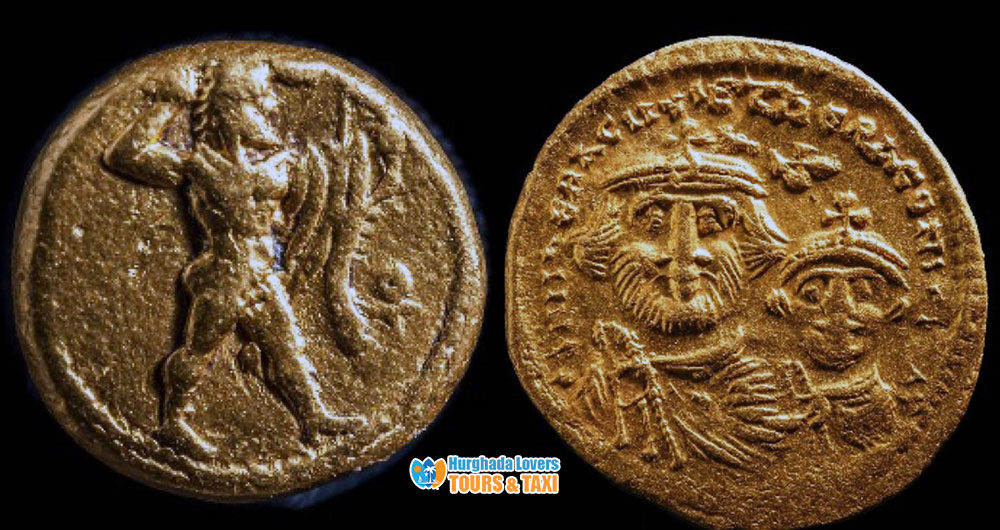Ancient Egyptian Coins | Currency, Coinage, The History of Pharaonic Money and Coins in ancient Egypt, How did the Pharaohs deal with the buying and selling process before the appearance of money, and more secrets of ancient Egyptian civilization.
Currency in Ancient Egypt | History and facts about the use of money in pharaonic times.
Learn about the secrets of the ancient Egypt in the Pharaonic civilization and how the Ancient Egyptians practiced buying and selling by barter to learn more about Ancient Egypt History.
Ancient Egyptian Coins
Did the ancient Egyptians have money?
No Egypt Archaeological Sites or Egyptian Monuments evidence has been found that proves that the ancient Egyptians used the Ancient Egyptian Coins in their history yet there are speculations that speak of the possibility that they used certain metals “Ancient Egyptian Metallurgy” with precise weights to use them in sale and purchase.
This is certain and proven that barter remained the system of commercial and Trade in Ancient Egypt exchange even the Military of ancient Egypt, civil servants in Ancient Egyptian Government and those serving in the royal palace were paid for Agriculture in Ancient Egypt, animal and food products, furniture and Industry in ancient Egypt products.
Cheques were sometimes used as an alternative to direct payment during barter, and these cheques and contracts varied between sales and purchase contracts, taxes and property, all of which were another aspect of no cash.
It may have appeared in part during the Middle Kingdom era The beginning of the Egyptian Pharaohs kings Eleventh Dynasty of Egypt , transactions that refer to a copper standard for certain commodities and livestock, but this was not general, as Petri says.
What was the money called in ancient Egypt?
Ancient Egyptian Coins were not known in Egypt throughout its Pharaohs history from Predynastic Period Naqada III to Late Period, despite controversy over the use of a standard monetary process in the Eighteenth Dynasty of Egypt from The New Kingdom.
Real money did not exist in Egypt before the Thirtieth Dynasty of Egypt (approximately 380 – 343 BC).
The Egyptians did not agree to use the minted foreign currencies, but rather they were exchanged as ingots because of the metal they contained.
Most of the Ancient Egyptian Coins that were found in the early dates in Egyptian treasures were in the form of silver fragments or silver powder, and these were melted down for use in various industries, not in money, such as making cups and jewelry, according to what was found in the treasure of parcels and treasures of Tell el-Amarna during King Akhenaton, as we mentioned.
The basis for the exchange of goods in Egypt before the use of money was barter in kind, and it continued after the use of money in rural areas as in Geography of ancient Egypt.
What did the Ancient Egyptian use to buy and sell goods?
In the period before the introduction of local currencies, the movement of cash and ingots was unidirectional. Always brought.
These were used in exchange for the value of the metal itself, as silver was part of barter. There is evidence of the valuation of mineral properties since the Old Kingdom with start Third Dynasty of Egypt, but evidence of this was abundant in the New Kingdom, as evidenced by blogs left by workers in in The Tombs of Deir Al-Madina Luxor.
If the question has become acceptable in the workers’ congregation of Deir al-Madina, the question is not certain for other markets far from it.
Did ancient Egyptians have coins?
Professor Maspero wrote an interesting article describing a scene in a market in which he noticed that the exchangers used small boxes containing unknown goods and concluded that these boxes contained pieces of metal that served as currency, he says after examining the scenes. carefully.
In short, I think that the box contains metal, worked in the form of small jewels or in the form of alloys of known weight, and this is the only way to explain the existence of this box in three scenes of the market scenes that include ten scenes, and this theory has also confirmed the absence of anything to exchange in the hands of those who carry such a box in addition to its small size.
There is a document that was discovered by (Stepptendorf) in 1910, which is a small plaque in the cemetery of Guizeh that contains an inscription that speaks of a sale that took place between the writer (Tanti) who sold his house to the priest (Kambo) at the time of King Khufu from Fourth Dynasty of Egypt, with a form similar to the currency that the text calls (Sha’at).
Ancient Egyptian Coins. Here is the translation of this text: “Kambo said: I bought this house for a reward to the cleric Teneti, and I gave him ten (sha’at), which is as it comes a piece of furniture (?) of wood (Ani) worth three sha’at, and a bed of cedar wood of the best price. Four sha’at and a piece of sycamore wood worth three sha’at. Then (Teneti) said: (Long live the king), I will give what is right because you paid by transfer, and you will be comfortable from home, so he seals in the administration of the city of (Khoufout Khoufou) before the testimonies of the administration of (Tetti) and the sect of priests (Kambo). (Mohi, cemetery worker, (Sebeni), (Ani), (Ani Ankh Hor) funeral priests.
There was a long debate about this “sha’at” and some scholars saw that it was a measure of pies, and some of them saw that it was a specific weight of a precious metal by which selling prices were estimated. to which Maspero referred contained pieces of this sha’at, but in any case, we see that this question was very limited and was not a general and popular recourse in the history of ancient Egyptian civilization to replace barter or an intermediate method between sellers and buyers.
The word sha’at has other derivatives, some of which are more recent, including: Shenat, Sheena and Sinu, which was originally read as Shati. The word is the subject of intense debate about its concept in commerce.
What is the oldest Ancient Egyptian Coins?
The controversy is about whether there is a small metal unit – in the New Kingdom – that has a fixed weight called sniu (shati) to facilitate commercial transactions? And the case we have mentioned of the Old Kingdom does not carry this meaning. There is no doubt that metals in the Old Kingdom were among the commodities for which they were traded, especially copper, gold and silver.
But what is also indisputable is that it was not a common product and was not regularly available on the market. The wage in the Old Kingdom as paid to the worker in kind – grain – oil – cloth – sandals… etc., each according to their Social Structure in Ancient Egypt.
Ancient Egyptian Coins. Most of the wages of ordinary workers were in the form of food for him and his family, and they were few for workers in the lower ranks of the social ladder. Therefore, barter was a natural thing to obtain the necessities necessary for life.
In such a market, there is no place for Ancient Egyptian Coins But all this does not deny that the idea of “value” as an abstract concept independent of the current commodity, was known to value commodities (as in the case of fabric already mentioned).
Note: Information is being added about money and currencies in ancient Egypt and the Pharaonic civilization
References Ancient Egyptian Coins: The Book of Ancient Egyptian civilization, Egypt
Hurghada Lovers best Tour Operator to provide daily tours to visit the Tourist attractions of Luxor by Hurghada to Luxor Day Trips and Cairo by Hurghada to Pyramids Day Trips to discover the secrets. Book online when you come to Hurghada, El Gouna, Sahl Hashish, Makadi Bay, Soma Bay.


